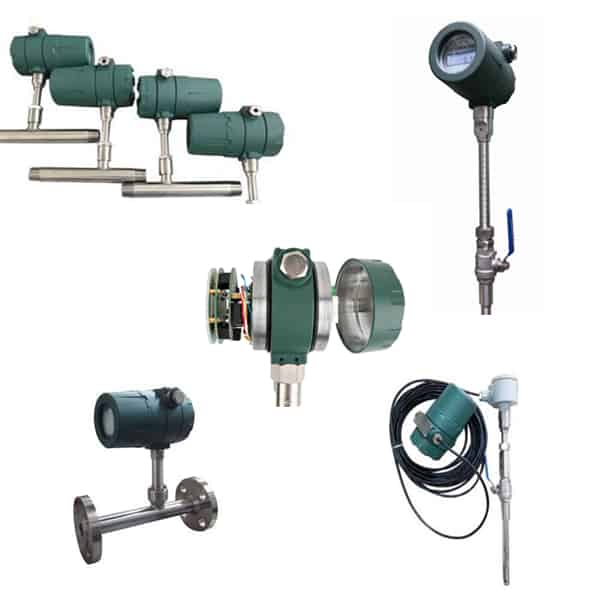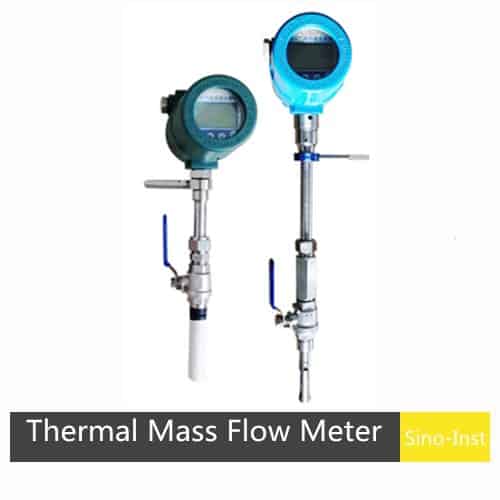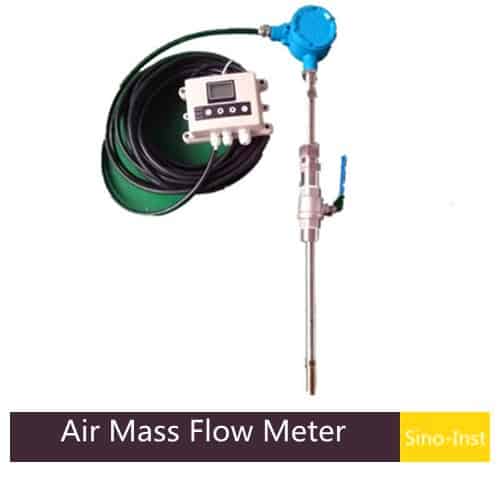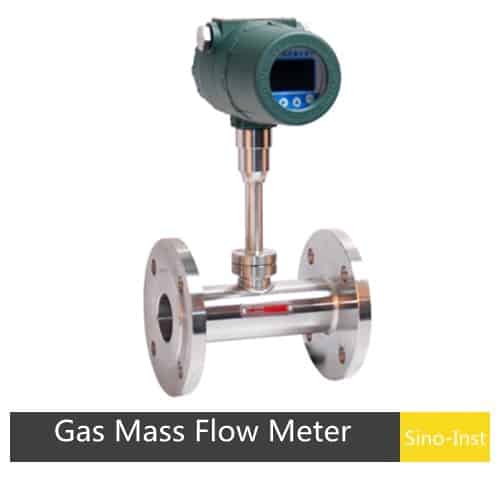Best Technology Guide to Thermal Mass Flow Meters.
Do you need direct mass measurement of industrial gases, compressed air and aqueous fluids ? We will discuss and explain various measurement techniques for Thermal mass flow meters.
Thermal Mass Flow Meter (TMF) also called Thermal Flow Meter. Thermal Mass Flow Meters measure the mass flow of a fluid. An external heat source will heat the pipe or the fluid. Temperature field changes when the fluid flows through the pipe. Thermal mass flow meter measures the relationship between the energy required to increase the temperature of a fluid and the mass of the fluid to measure the mass flow of the fluid. The flowmeters directly measure the mass flow or normalized volume flow of gases. Without any additional pressure and temperature compensation. Generally, thermal mass flow meter used to measure the mass flow of a gas (like natural gas).
Featured Thermal Mass Flow Meters
- Features of Thermal Mass Flow Meters
- Thermal mass flow meter advantages and disadvantages
- Thermal mass flow meter Applicaitons
- How does a thermal mass flow meter work?
- Thermal Mass Flow Meter Installation
- Our advance service solutions for thermal mass flowmeters
- Thermal Mass Flow Meter Price
- Difference between thermal mass flowmeter and vortex
- Difference between a thermal mass flow meter and a mass flow meter
- Technical Support
Features of Thermal Mass Flow Meters
- 1. Constant temperature heating design, direct mass flow measurement.
- 2. No need for pressure/temperature transmitter (Calibration to compensate for pressure/warm).
- 3. All products are designed with no moving parts. Wide range ratio:100:1 is sensitive to flow.
- 4. Metal welded construction, plug-in ball valve. Low pressure loss.
- 5. Performance intelligent microprocessor and moudulus; Digital to analog conversion chip;
- 6. Low flow rate measurement is very sensitive;
- 7. Suitable for all types of single or mixed gas flow measurement.
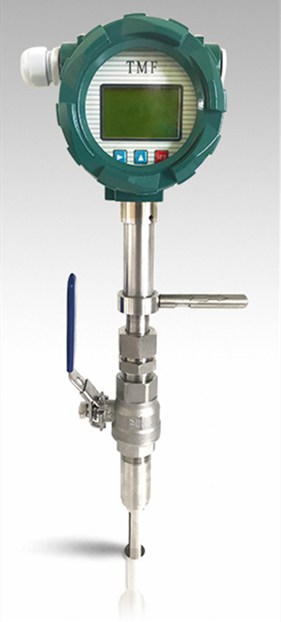
Thermal Mass Flow Meter Advantages and Disadvantages
| Advantages | Disadvantages |
| Multivariable – direct measurement and display of mass flow and fluid temperature | Thermal mass flowmeters respond slowly. |
| No pressure or temperature compensation required | In the place where the measured gas composition changes greatly, the measurement value will vary greatly due to the change of cp value and thermal conductivity, which will cause errors. |
| High turndown (100:1) | |
| Excellent low-end sensitivity | For small flows, the meter will bring considerable heat to the measured gas. |
| Quick reaction to fluctuations in flow | For the thermal distributed thermal mass flowmeter, if the measured gas deposits a scale layer on the pipe wall to affect the measured value, it must be cleaned regularly; for the thin tube type instrument, it is more prone to blockage and cannot be used under normal circumstances. |
| No moving parts. Reduces maintenance and permits the use in demanding application areas, including saturated gas. | |
| Thermal flowmeters provide excellent accuracy and repeatability over a wide range of flow rates. | |
| Thermal flow meters can measure flow in large pipes. | The use of pulsating flow will be limited. |
| Thermal mass flow meter can measure low flow rate (gas 0.02 ~ 2m / s) and small flow rate. Immersion thermal mass flow meter can measure low to medium to high flow rate (gas 2 ~ 60m / s). Plug-in thermal mass flow rate Gauge is more suitable for large diameter. | Thermal mass flow meters for liquids are also limited in their use for viscous liquids. |
Thermal Mass Flow Meter Applicaitons
- Measurement of oxygen, nitrogen, hydrogen, chlorine and multi-component gases.
- Measurement of blast furnace gas and coke oven gas.
- Flue gas measurement.
- Aeration and chlorine measurement in biogas and water treatment.
- Compressed air measurement.
- Flow measurement of natural gas, liquefied gas, flare gas, etc.
- Primary and secondary air flow measurement of power plant blast furnace
- Flow measurement of underground ventilation or exhaust system.
Based on our many years of experience in gas measurement services. We have compiled and summarized the media suitable for thermal mass flow meters for your reference:
Gases Commonly Measured with Thermal Mass Flow Meters:
- Oxygen (O2)
- Nitrogen, (N2)
- Carbon dioxide (CO2)
- Hydrogen, (H2)
- Chlorine gas,
- Argon (Ar)
- Helium (He)
- Natural gas,
- Liquefied gas,
- Fre energy,
- Compressed air
- Multi-component gas measurement biogas,
- Methane (CH4)
- Aeration and chlorine measurement in water treatment,
- Gases,
- Carbon dioxide gas flow rate during beer production,
- Gas flow during semiconductor chip manufacturing process,
- Gas flow measurement in solvent recovery systems
- Blast furnace gas,
- Coke oven gas,
- Flue gas,
- During the gas process, air,
- Calcining furnace flue gas,
- Combustion gas measurement in coal-fired boilers.
- Smoke flow (speed) measurement of smoked meat (CEMS)
- Primary air, secondary air,
- Mine ventilation or exhaust system flow,
- Gas flow (velocity) measurement in heating ventilation and air conditioning systems
- And many more… (Comments are welcome to add)
If you are not sure whether you can choose a thermal mass flowmeter for your measurement conditions, please feel free to contact our Sino-Inst technical engineers!
How Does a Thermal Mass Flow Meter Work?
What is a Thermal Mass Flow Meter?
Thermal mass flow meter is a flow meter that measures the mass flow of a fluid.
Thermal mass flowmeters measure the mass flow of a fluid by using the temperature field changes that occur when the fluid flows through a pipe heated by an external heat source, or by using the relationship between the energy required to increase the temperature of the fluid and the mass of the fluid when the fluid is heated.
Theory of Operation
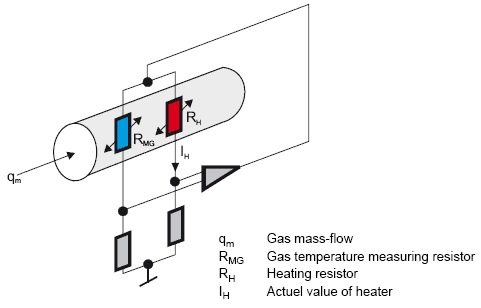
Thermal gas mass flowmeter is a meter that measures the mass flow of gas using the principle of heat conduction. The sensor of the thermal mass flowmeter consists of two reference thermal resistors (platinum RTD). One is the mass speed sensor T1, and the other is the temperature sensor T2 that measures the temperature change of the gas. When these two RTDs are placed in the measured gas, the sensor T1 is heated to a constant temperature difference above the gas temperature, and the other sensor T2 is used to sense the temperature of the measured gas. As the mass flow rate of the gas increases, the airflow takes away more heat, and the temperature of the sensor T1 decreases. To maintain a constant temperature difference between T1 and T2, the heating power of T1 must increase. According to King’s law of thermal effects, there is a certain mathematical relationship between heating power P, temperature difference △ T (T1-T2) and mass flow Q.
P / △ T = K1 + K2 f (Q) K3
K1, K2, K3 are constants related to the physical properties of the gas.
Specifications of Thermal Mass Flow Meters
| Medium | All gases (except acetylene) | |||||
| Pipe diameter | DN10-80 (Flange type) | DN100-6000 (Insert type) | Split type (support customized) | |||
| Flow rate | 0.5-100m/s | |||||
| Accuracy | ±1% | |||||
| Operating temp. | Sensor | Default type: -10~+200℃ | ||||
| High temp. type: -10~350℃ | ||||||
| Transmitter | -20~+45℃ | |||||
| Operating pressure | Medium pressure≤10MPa | Medium pressure≤2.5MPa | ||||
| Power supply | Compact type | DC24V or AC220V≤18W | ||||
| Remote type | AC220V≤19W | |||||
| Response time | 1s | |||||
| Output | 4-20mA | Optical isolation, max. load 500Ω | ||||
| RS485 | Optical isolation | |||||
| HART | ||||||
| Pipe material | Carbon steel, stainless steel, plastic, etc. | |||||
| Display | Compact type: 4 lines LCD display | |||||
| Display content | Mass flow, standard volume flow, accumulated flow, time, accumulated time, medium temp., standard flow, etc. | |||||
| Ingress protection | IP67 (sensor part) | |||||
| Sensor material | Stainless steel | Stainless / carbon steel | ||||
Thermal Mass Flow Meter Installation
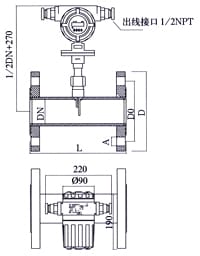
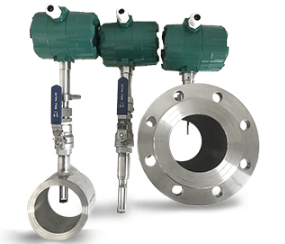
Thermal gas mass flowmeter consists of integrated flow converter and flow sensor. According to the type of flow sensor, it is divided into: plug-in type and tube type thermal gas flow meter.
Integrated plug-in thermal mass flow meter: plug-in sensors can be installed and maintained online. The installation process is to first weld a base with external threads on the outer wall of the pipe. Install a 1-inch stainless steel ball valve on the base. Then use a special tool to punch the pipe with a diameter of 22mm. After drilling, remove the special tool. Finally, the sensor Install on the valve and insert the sensor into the center of the tube (the insertion position of the sensor is determined at the factory).
If the pipe material cannot be welded (such as cast iron, PVC, glass fiber reinforced plastic, cement, etc.), the special fixture produced by our company can be used to fix the sensor on the pipe.
Plug-in sensor applicable pipe diameter: DN80 ~ 6000mm (specify when ordering larger pipe diameter).
Tube-type thermal gas mass flow meter: The tube-type thermal gas mass flow meter is already equipped with a process pipe with the same inner diameter as the on-site pipe when it leaves the factory. The connection method to the field pipeline is flange connection or thread connection. The flange standard complies with the national standard GB / T9119-2000. The pipe diameter sensor is suitable for pipe diameter: DN15 ~ 2000mm.
The material of the sensor is stainless steel, and the material of the pipe is carbon steel or stainless steel. Please specify when ordering special materials.
Our Advance Service Solutions for Thermal Mass Flowmeters
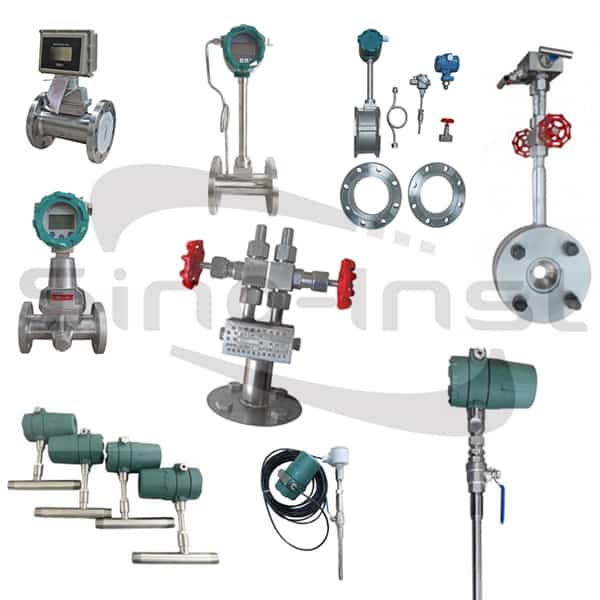
Inline Compressed Air Flow
Compressed Air Flow Meter is the digital flow meter work for the air compressor. Thermal mass, vortex, portable ultrasonic, and DP flowmeters are commom gas flow sensors. Air consumption is an important info for industrial inline gas flow pipe. Compressed air is the most expensive form of energy in manufacturing plants. And compressure air accounts for up to 20% of the overall energy costs. So, It is important to measure compressed air flows precisely in all conditions. This can improve the energy efficiency of compressed air systems while reducing costs.
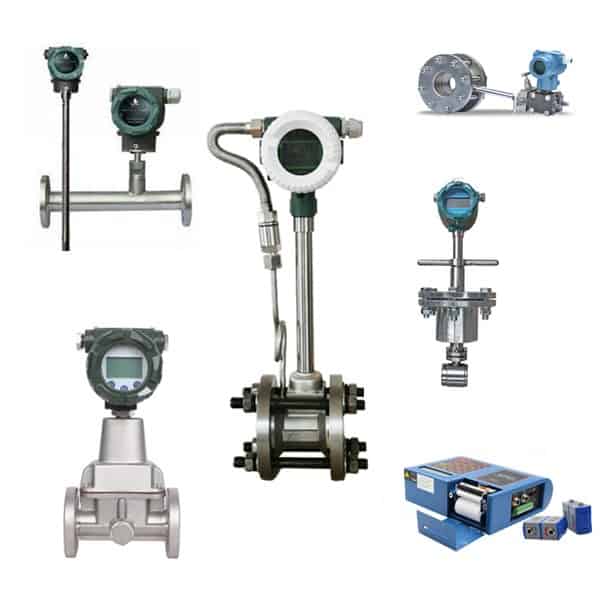
Steam Flow
Steam flow meters are digital flow meters for steam flow measurement. A variety of technologies are suitable for steam flow measurement. Common types are: Vortex flow meter. Differential pressure flow meters and portable ultrasonic flow meters works too. Other technologies to measure steam, like Coriolis flow meters. But the price vs the advantages against vortex or DP flowmeters are not justifying the price of a coriolis flow meter. If you have any problems with the steam flow meters type selection, contact us now! Our Technical Engineer will provide you with free technical support and selection assistance.
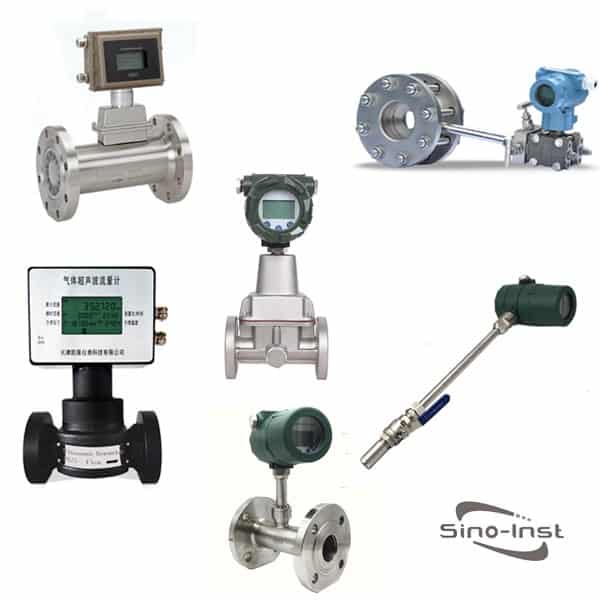
Natural Gas Flow
Natural Gas Flow Meter, is the inline flow meter for natural gas pipeline. Like: thermal mass flow meter, ultrasonic natural gas flow meter, natural gas turbine flow meter. Intelligent Gas Precession Vortex Flowmeter, and differential pressure flow meter. These are the most common inline natual gas flow meters with digital display. According the natural gas pipeline measurement conditions, select suitable natural gas flow meter. Such as: pressure, temperature, length of straight pipe, diameter of pipe, insertion or remote installation, etc,. If you have any question about the natural gas flow meter, please contact us.
Thermal Mass Flow Meter Price
Sino-Inst is a manufacturer of thermal mass flow meters. We offer a variety of mass flow meters products and a full range of consulting services for flow measurement solutions, instrumentation, sub-assembly, design and fabrication, engineering, calibration and certification.
Thermal mass flow meter price is decide by your measurement details. Please offer your informations like:
Measurement medium:
Pipe caliber:
measure temperature:
Measure pressure:
Installation method:
output signal:
Material requirements:
All these parameters will affect the price. But we will surely offer you the best price.
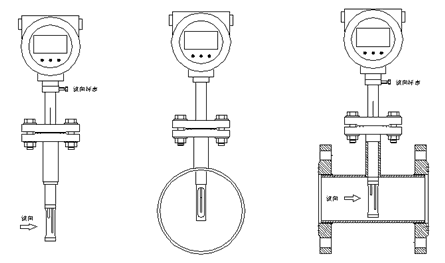
Differential installation types of thermal mass flow meters.
Difference Between Thermal Mass Flowmeter and Vortex
Vortex flowmeter is a volume flowmeter. Thermal gas flowmeter is a mass flowmeter. The measurement principle of the two is different.
Vortex flowmeters are widely used, and can measure gases, liquids, and steam. Thermal methods can only measure gases.
Vortex flowmeters are much cheaper.
Vortex flowmeters have requirements for the installation of straight sections of measuring pipelines. Generally, the first 10D and the later 5D are required. There are no restrictions on thermal mass flowmeters.
Vortex flowmeters are widely used, gas, liquid, and steam can be measured, while the thermal type is generally only used to measure gas or small flow liquid.
Difference Between a Thermal Mass Flow Meter and a Mass Flow Meter
What is the difference between a thermal mass flow meter and a mass flow meter?
The thermal method can only be used for gas. It uses different gases to conduct and absorb heat differently. It measures the heat transfer or heat loss from heating to induction to correspond to the flow rate.
Thermal mass flow meters (Thermal Mass Flowmeters, TMF for short) are commonly referred to as thermal flow meters in China. Thermal flow meters measure the mass flow of a fluid by using temperature field changes that occur when a fluid flows through a pipe heated by an external heat source. Or a flow meter that measures the mass flow of a fluid by using the relationship between the energy required for the fluid temperature to rise to a certain value when heating the fluid and the mass of the fluid. Generally used to measure the mass flow of a gas. With low pressure loss; large flow range; high accuracy, high repeatability and high reliability; no moving parts, and can be used for monitoring and control of extremely low gas flow. Measurement of fluids using changes in heat (or temperature) of heated fluids Has a long history of mass flow.
The common mass flowmeter refers to the Coriolis flowmeter. Coriolis flow meter uses the Coriolis principle (interference of the earth’s rotation to curvilinear moving substances) to directly measure the mass of fluid flowing through it, which can measure gas and liquid.
The volume of a fluid is a function of fluid temperature and pressure and is a dependent variable. The mass of a fluid is a quantity that does not change with time, space temperature, and pressure. As mentioned earlier, the flow measurement values of commonly used flow meters. Such as orifice flow meters, turbine flow meters, vortex flow meters, electromagnetic flow meters, rotor flow meters, ultrasonic flow meters, and oval gear flow meters, are Volume flow meters.
Technical Support
Thermal mass flow meters measure a flow rate based on convective heat transfer. Fluid properties are some of the many factors that influence convection. Each gas has unique properties, which is why these flow meters are calibrated for a specific application. You wouldn’t want a meter calibrated for an air application placed into a natural gas application without recalibration or some type of field adjustment if applicable.
Thermal flow meters are at the forefront in flow measurement for emissions reporting and energy management projects. Some popular applications include monitoring gas fuel flow to a combustion source to report SO2 emissions, stack gas flow in power plants as part of a continuous emissions monitoring (CEM) system of NOX and SO2 and flares in a gas field that need to be reported to environmental authorities. These applications prove difficult for many flow meter technologies.
Thermal dispersion is the application of high shear force to waste paper pulp at high temperature and high concentration. By mechanical friction and impact and friction and kneading between fibers, the remaining ink that is not peeled off from the fibers is further peeled off, and the pulp contains The process of finely dispersing impurities such as ink and adhesives. Therefore, thermal dispersion is a homogenization process of pulp, and it is an operation to improve the quality of pulp.
Thermal dispersion does not remove impurities by itself, the purpose of which is to enable dispersed impurities to be better removed in subsequent flotation and washing, and even if it cannot be removed, its harm will be hidden. For example, ink particles less than 50 μm are invisible to the naked eye, which will not cause obvious appearance quality problems; the miniaturization of adhesives will reduce the sticky obstacles of the paper machine part; the miniaturization of impurities will reduce the dustiness of the slurry.
Thermal flow switch is designed based on the principle that the temperature change of the probe produces a difference. A heat sensor and two heat sensors are built in the probe and are in contact with the medium. When the thermal flow switch works, the heating sensor emits constant heat. When there is no medium flowing in the pipe, the heat received by the heat sensor is a constant value. When there is medium flowing, the heat received by the heat sensor will follow The flow rate of the medium changes and the thermal sensor converts the temperature difference signal into an electrical signal. When the flow rate reaches a certain set point, the thermal flow switch outputs a switching signal.
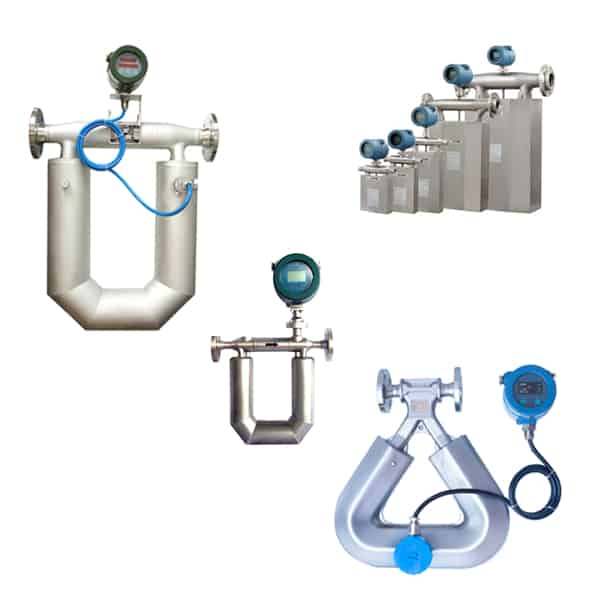
Coriolis Mass Flow Meter Technology
Coriolis mass flow meter also called micro motion flow meter. Coriolis mass flow meter is the mass flow meter beasd on the coriolis force. Coriolis mass flow meter and thermal mass flow meter are the most common mass flow meters. Corolis mass flow meters are best choice for all process and custody transfer (CT) applications. Coriolis mass flow meter can measure different values at the same time. Mass, volume flow, density and concentration measurement of liquids and gases. This is the most important difference among Coriolis mass flow meter, DP and oval gear flow meters.
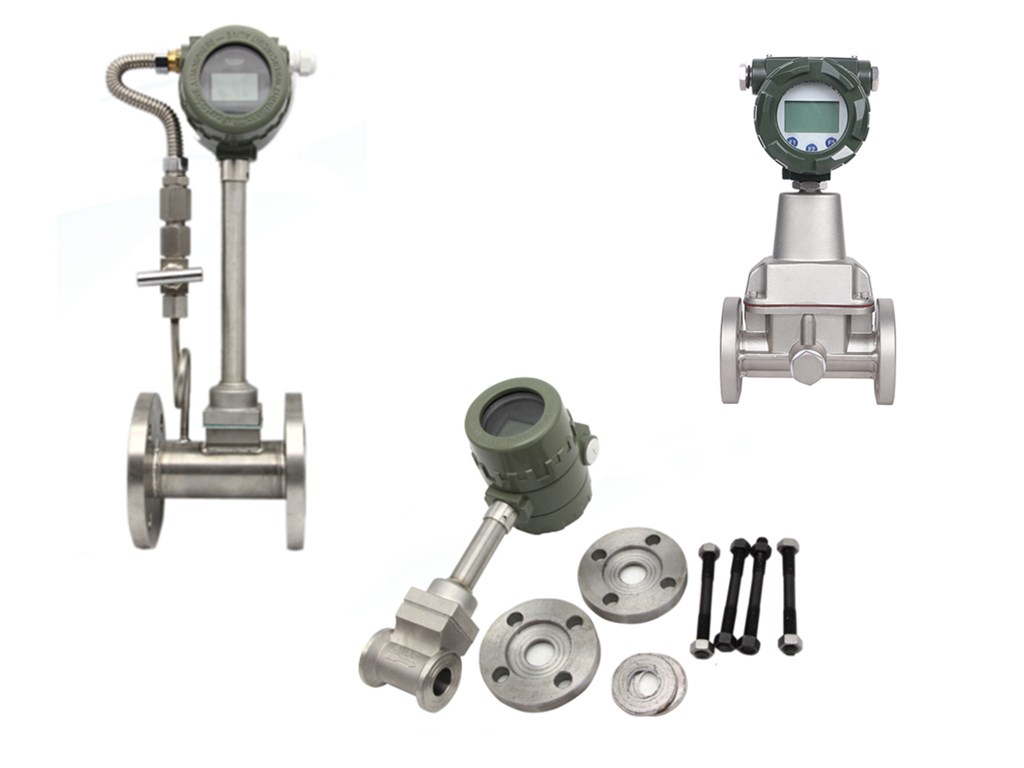
Vortex Flowmeter Technology
Vortex flow meters are suitable for measuring steam as well as a variety of liquids and gases. As fluid moves across a vortex meter shedder bar, vortices form. The frequency of the vortices shedding is proportional to the fluid velocity. Even for the steam flow rate, Vortex flow meters are the perfect choice. Pressure and Temperature compensation ensure measurement accuracy. When measure steam or gas flow in pipes with variable operating pressure and temperature. Applications in the chemicals and petrochemicals industries. For example, in power generation and heat-supply systems. Involve widely differing fluids: saturated steam, superheated steam, compressed air. Nitrogen, liquefied gases, flue gases, carbon dioxide, fully demineralized water. Solvents, heat-transfer oils, boiler feedwater, condensate, etc.
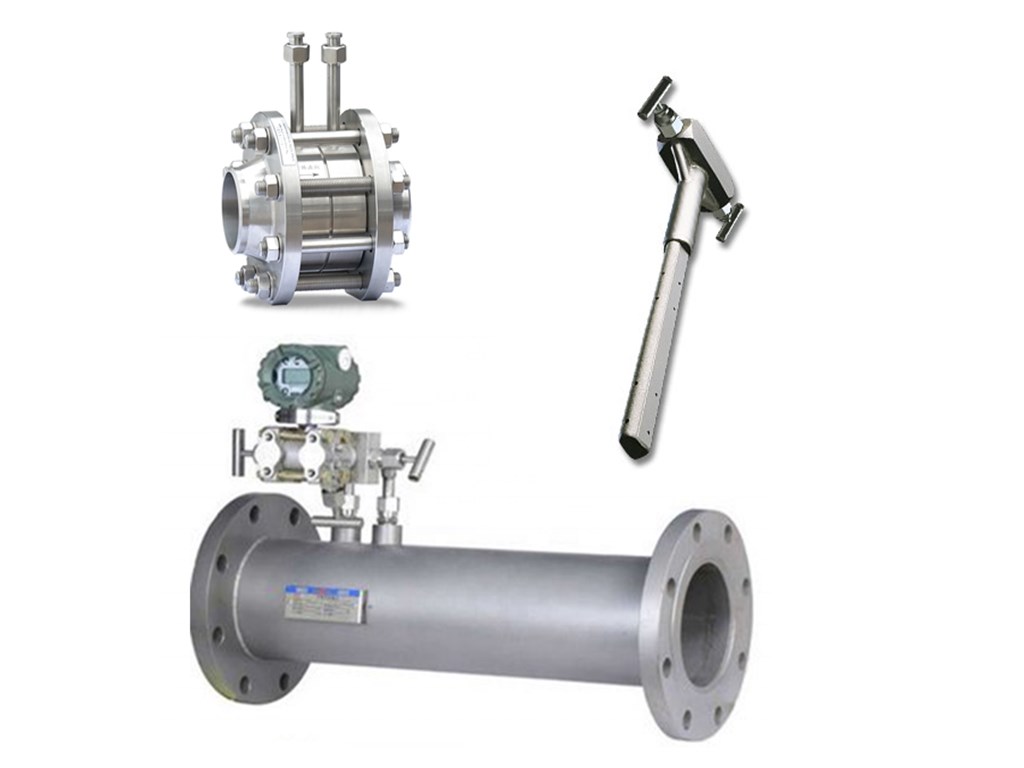
Differential Pressure Flow Meter Technology
Differential Pressure Flow Meters also called DP flow meters. Differential pressure flow meters consist of flow sensors and pressure/differential transmitters. DP Flow Meters measure the flow rate based on the differential pressure measured by the flow sensor parts. Flow sensors are the important part of differential pressure flow meters. Like: Orifice plate, Venturi tube, Wedge, V-cone and Averaging Pitot Tubes. Differential pressure (DP) flow meters are suitable for applicaitons, like: water, gas, steam, oil….
-1.jpg)
